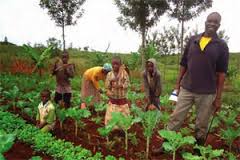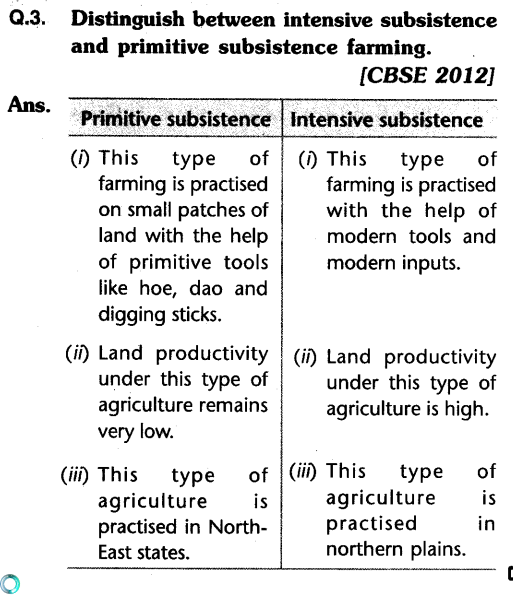Neighborhood Durability and Its Connection to Commercial Farming vs Subsistence Farming
Neighborhood Durability and Its Connection to Commercial Farming vs Subsistence Farming
Blog Article
A Thorough Consider the Obstacles and Advantages of Modern Farming
Modern farming stands at the crossroads of innovation and sustainability, presenting a multitude of chances and difficulties. With improvements like accuracy farming and biotechnology encouraging improved performance, the market all at once faces critical issues such as environmental deterioration and socio-economic variations. As we check out the elaborate balance between technical progression and its more comprehensive influences, the concern develops: can we accomplish a sustainable future that benefits both the environment and farming neighborhoods? The course ahead demands a careful exam of these characteristics, inviting stakeholders to consider the possibility for transformative modification in agricultural techniques and policies.
Technological Innovations in Farming
Technological innovations in farming have actually changed the farming market, driving boosted performance and effectiveness. Innovations such as accuracy automation, farming, and biotechnology have changed conventional farming techniques, permitting even more successful and sustainable procedures. Accuracy agriculture uses GPS modern technology, sensors, and information analytics to maximize field-level administration pertaining to crop farming. This technique enables farmers to apply inputs like water, plant foods, and pesticides a lot more judiciously, minimizing waste and decreasing expenses while boosting yields.
Automation in farming has even more thrust the industry forward, with the introduction of autonomous tractors, drones, and robotics. These technologies reduce labor demands and enhance operational speed, enabling prompt growing and harvesting. Drones, specifically, give beneficial airborne images and information, helping farmers in monitoring crop wellness and detecting concerns early.
Biotechnology has actually additionally played an essential function ahead of time agricultural techniques. Genetically changed microorganisms (GMOs) have been developed to boost plant resistance to diseases and pests, lower dependence on chemical therapies, and improve nutritional content. This modern technology adds to food protection and meets the demands of an expanding global population. Collectively, these technological developments have actually prepared for a much more sustainable and resistant farming future.
Ecological Challenges
Farming faces numerous environmental difficulties that threaten its sustainability and performance. One of the main concerns is the destruction of soil health and wellness due to extensive farming practices that diminish important nutrients and bring about erosion. The overuse of chemical plant foods and chemicals additionally intensifies this concern, polluting water resources and minimizing biodiversity. The long-term feasibility of agricultural land is jeopardized, demanding the adoption of even more lasting practices.
Water deficiency is another significant challenge, particularly in regions where agriculture heavily depends on watering. Environment adjustment is magnifying this problem, changing precipitation patterns and boosting the regularity of dry spells. Reliable water monitoring systems, such as drip watering and rain harvesting, are vital to minimize these results, yet their execution stays unequal throughout different regions.
Additionally, agriculture is both a contributor and a target to climate adjustment. Attending to these environmental difficulties is vital for making certain a sustainable farming future.

Financial Impacts
The financial effects of modern agriculture are extensive and diverse, influencing both regional and global markets. Breakthroughs in innovation and production techniques have actually substantially increased farming productivity, causing much more reliable food supply chains and decreased prices for consumers. This heightened productivity has actually enabled nations to meet growing needs, stabilize food costs, and add to economic development. The export of farming assets has ended up being a significant resource of revenue for several nations, playing an important function in their financial development.
However, these advantages are not without obstacles. The capital-intensive nature of modern-day farming calls for substantial financial investment in equipment, plant foods, and genetically customized seeds, which can be economically difficult for small farmers. This usually causes raised financial debt and economic susceptability, potentially resulting in the loan consolidation of ranches and the loss of country source of incomes. Furthermore, worldwide market fluctuations can influence the productivity of farming exports, making economic climates reliant on agriculture susceptible to financial instability.
Furthermore, aids and trade policies in established nations can misshape market costs, influencing competitive equilibrium and potentially disadvantaging farmers in creating countries. Generally, while modern farming drives financial development, it also requires browsing complex monetary landscapes to make certain lasting and equitable advancement.
Social Effects
While modern farming has actually produced considerable innovations, it also provides numerous social implications that require factor to consider. One significant issue is the variation of small farmers as a result of the rise of big agricultures. more info here As company farming entities increasingly dominate the agricultural landscape, smaller ranches usually struggle to contend, causing the disintegration of country areas and traditional farming methods. This change can result in a loss of local expertise and social heritage that smaller sized farms maintain.

Furthermore, there are worries regarding food safety and security and sovereignty. The focus on monoculture and genetically modified plants can weaken biodiversity and make food systems a lot more susceptible to insects and diseases. Such methods might also restrict customer choices and reduce the capacity of regional communities to regulate their food resources. As these social ramifications unfold, it comes to be critical to resolve them to guarantee lasting and equitable farming advancement.
Future Instructions
Looking ahead, numerous appealing methods for modern farming could attend to the challenges dealt with today while cultivating sustainable development. Advances in modern technology, such as precision agriculture, use the potential to enhance source use and boost performance. By employing information analytics and device understanding, farmers can make informed choices pertaining to crop monitoring, bring about decreased input prices and minimized environmental effect. In addition, the integration of renewable resource resources right into farming practices might dramatically reduce dependency on nonrenewable fuel sources and contribute to reduce greenhouse gas exhausts.
Biotechnology likewise holds enormous assurance for the future of farming. Genetically changed microorganisms (GMOs) and genetics editing and enhancing strategies, like CRISPR, can boost plant durability against climate change, pests, and diseases, thus improving food safety. In addition, expanding plant selections to consist of even more nutrient-dense and climate-resilient alternatives might reinforce both environmental stability and human nourishment.

Verdict
Modern farming, characterized by technological developments, presents both challenges and possibilities. While advancements such as precision farming and biotechnology boost efficiency and sustainability, they also add to environmental issues like dirt degradation and water deficiency. The economic influences are considerable, affecting small farmers and leading to wider social effects. Attending to these complexities needs a transition in the direction of sustainable methods that balance efficiency with environmental stewardship and social equity, consequently ensuring a resistant future for global farming systems.
Modern agriculture stands at the crossroads of straight from the source innovation and sustainability, providing a wide variety of challenges and opportunities. Additionally, worldwide market changes can influence the profitability of agricultural exports, making economic climates reliant on farming at risk to economic instability.
Furthermore, the intensive use of innovation and automation in farming has actually led to a decline in agricultural employment possibilities.Looking in advance, several promising avenues for modern agriculture could deal with the difficulties dealt with today while promoting sustainable growth. commercial farming vs subsistence farming.Modern agriculture, defined by technological improvements, offers both possibilities and obstacles
Report this page